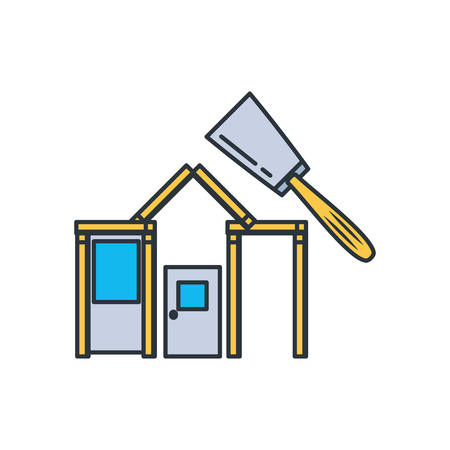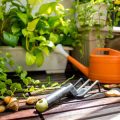Assessing Your Storage Needs
Before you start organizing your garden shed, it’s crucial to take a step back and assess what you actually need to store. Begin by taking inventory of all your gardening tools, lawn care equipment, seasonal items, and any supplies that have found their way into the shed over time. This helps you understand not just what you own, but also how often you use each item—so you can prioritize accessibility for your most-used tools. Consider the size and layout of your shed as well. Are there awkward corners or vertical space going unused? By evaluating both your available space and the types of items you need to store, youll be able to create a plan that maximizes efficiency and minimizes clutter. Remember, a well-organized shed doesn’t just look better—it saves you time and energy every time you step inside.
Decluttering and Sorting Essentials
Before you can achieve a perfectly organized garden shed, it’s essential to tackle the mess head-on by decluttering and sorting through everything you have. Start by emptying out your shed completely so you can assess each item’s value and utility. Ask yourself if you’ve used it in the past year—if not, consider donating, recycling, or disposing of it. This process clears out unnecessary items and creates more space for what truly matters.
Expert Advice on Purging Unnecessary Items
Professional organizers recommend adopting the “one-year rule” as a simple guideline: if an item hasn’t been touched in over a year, it probably doesn’t deserve a place in your limited shed space. Broken tools, duplicate supplies, expired fertilizers, and old pots should all be candidates for removal. Don’t forget to safely dispose of chemicals or pesticides according to local regulations.
Grouping Supplies Logically
Once you’ve streamlined your belongings, it’s time to categorize what remains. Grouping similar items together not only makes them easier to find but also keeps your shed tidy throughout the gardening season. Here’s a quick guide to logical grouping:
| Category | Examples |
|---|---|
| Hand Tools | Trowels, pruners, weeders |
| Power Equipment | Lawnmower, trimmer, leaf blower |
| Garden Chemicals | Fertilizers, pesticides, weed killers |
| Pots & Planters | Ceramic pots, seed trays, hanging baskets |
| Outdoor Gear | Gloves, hats, knee pads |
Easy-Access Storage Hacks
Keep frequently used items within arm’s reach and seasonal or rarely needed gear toward the back or higher shelves. Use labeled bins or clear containers to further separate small parts like seeds, plant tags, or hose attachments. This smart sorting system saves time and frustration every time you visit your shed.

3. Choosing Smart Storage Solutions
When it comes to organizing your garden shed, picking the right storage solutions makes all the difference. Start by exploring sturdy shelving units that maximize your vertical space—metal or heavy-duty plastic shelves are great for holding pots, soil bags, and larger tools. Pegboards are another game changer; mount one on the wall to keep hand tools, gloves, and small accessories within arm’s reach and clearly visible. For items that tend to get lost or cluttered, stackable storage bins work wonders. Choose clear bins so you can easily spot what’s inside, or use labels to identify contents at a glance. Don’t overlook hooks and magnetic strips for hanging shears, trowels, and even hoses. By mixing these storage hacks with products designed for durability and flexibility, you’ll create a shed that’s not only tidy but also saves time every time you need something.
4. Maximizing Vertical and Overhead Space
When it comes to organizing your garden shed, making the most of vertical and overhead space is a game changer. Instead of letting tools and supplies crowd your floor, take advantage of the walls and ceiling to keep everything accessible yet out of the way. Here are some smart strategies that can transform even the smallest sheds into highly functional spaces.
Utilize Vertical Racks
Vertical racks are perfect for storing long-handled tools such as rakes, shovels, and hoes. By installing these racks along your shed’s walls, you not only free up valuable floor space but also make it easier to see and grab what you need quickly. Adjustable racks allow you to customize spacing based on tool length, keeping everything neat and secure.
Install Hanging Organizers and Hooks
Hooks and hanging organizers are incredibly versatile for garden shed storage. Heavy-duty hooks can support hoses, extension cords, or even bicycles, while smaller hooks are ideal for hand tools, gloves, or gardening aprons. Consider pegboards with assorted hooks for a customizable solution that adapts as your storage needs change.
Take Advantage of Overhead Storage
The ceiling often goes unused in many sheds, but it’s prime real estate for bulky items you don’t use every day. Install sturdy overhead racks or loft shelves to stash seasonal gear, extra pots, or bins filled with lesser-used supplies. Just be sure everything is securely anchored and within safe reach when needed.
Comparison Table: Vertical & Overhead Storage Solutions
| Storage Option | Best For | Main Benefit |
|---|---|---|
| Vertical Racks | Long-handled tools (rakes, shovels) | Keeps tools organized & off the floor |
| Pegboards & Hooks | Hand tools, gloves, small items | Customizable & easy access |
| Overhead Racks | Bins, seasonal items, large gear | Maximizes unused ceiling space |
Pro Tip:
Label each rack or hook so everyone in the family knows where things belong—this makes it easier to maintain order all season long!
5. Seasonal Organization Strategies
One of the smartest ways to keep your garden shed organized year-round is by rotating your tools and gear according to the season. This not only saves space but also ensures that everything you need is always within easy reach. Start by creating dedicated zones or bins for each season—spring, summer, fall, and winter. As the weather changes, move the most frequently used items to the front of shelves or hooks. For example, in spring, have your seed packets, trowels, and pruning shears front and center. When summer arrives, shift lawn care tools like hoses, sprinklers, and grass trimmers to accessible spots.
Don’t forget about off-season storage! Store out-of-season items in labeled bins or on higher shelves. Consider using clear containers so you can quickly spot what’s inside without having to dig around. For bulky items like snow shovels or leaf blowers, wall-mounted racks are perfect for keeping them off the floor but still easy to grab when needed.
Another pro tip: create a checklist at the start of each season to remind yourself which tools should be rotated in or out. This habit will help you avoid clutter and make sure you’re never hunting for a misplaced rake or missing gloves. By staying on top of seasonal organization, your garden shed will always feel tidy and tailored to your current gardening needs.
6. Maintenance Tips for a Tidy Shed
Keeping your garden shed organized isn’t just a one-time job—it’s about establishing routines and smart habits that make tidiness effortless all year long. Start by setting aside a few minutes each month to sweep out dirt, leaves, and cobwebs. This simple step prevents clutter and keeps your storage space inviting. Regularly check for items you no longer use or need; donate or recycle tools and supplies to free up valuable space.
Stay on top of tool maintenance by wiping down metal parts with an oily rag to prevent rust and sharpening blades before storing them. Label shelves and bins clearly so everything has its place—this makes it easy to return items after each use. Consider creating a seasonal checklist: in spring, inventory seeds and fertilizers; in fall, clean and store summer tools properly.
If you notice any damage, like leaks or pest problems, address them right away to avoid bigger issues down the road. Keep basic cleaning supplies handy—think a broom, dustpan, and disinfectant wipes—so you can tackle quick cleanups as needed. By incorporating these expert tips into your routine, you’ll maintain a tidy, functional shed that supports all your gardening projects year-round.


